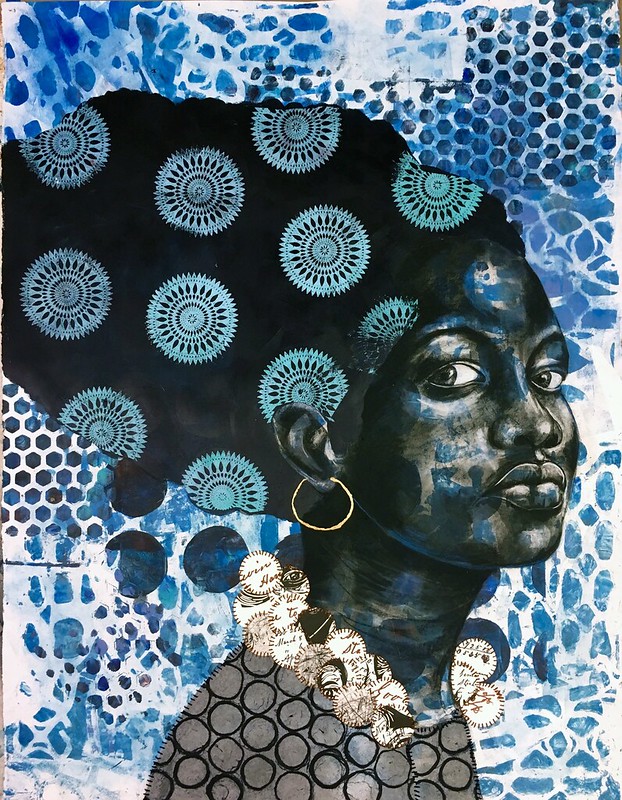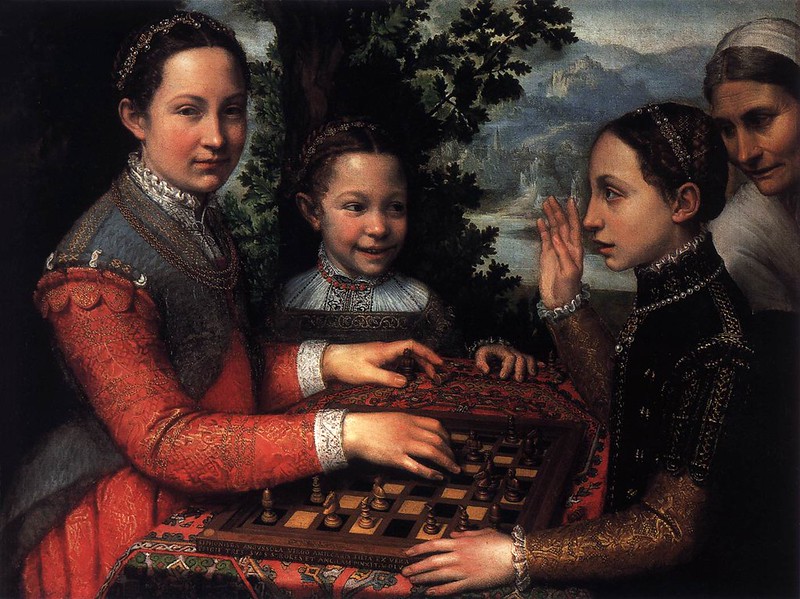Black female artists have been ignored and silenced for centuries as inequalities and injustices prevail.
When you think about Black artists, does Jean-Michel Basquiat come to mind? Art lovers worldwide know and love Basquiat, and rightly so. You may even know of the portrait artist and former slave Prince Demah or the sculptor William Edmondston.
But can you think of a single Black female artist? If nobody comes to mind, it doesn’t mean there aren’t any talented and powerful Black female artists out there. In this article, we’ll explore the role of some of these important and influential women throughout history and in modern times.
Silencing Black Voices
Black communities around the world, especially Black women, have had to work hard to preserve their cultural ancestry. Part of dealing with racism, violence, misogyny, exploitation, and slavery was articulating it in their own voices and images.
The iconic musician, Nina Simone, was known for her activism and performances at civil rights gatherings like the Selma to Montgomery marches. The author, Toni Morrison, was always outspoken about politics and race relations.
Similarly, Black female artists produced a rich body of creative work throughout the Civil War and the era after that. In the 1920s, some of it made its way into mainstream American culture as the Harlem Renaissance emerged. Sadly, Black female artists only began finding a broader audience in the late 20th and early 21st centuries.
Black Women You Can’t Ignore
Here are ten of the quintessential female Black artists the world should know and appreciate. Some are no longer with us, some have been around for a while, and some are newly emerging.
Harriet Powers – Quilt Artist
1837 – 1910

Born into slavery in Georgia, Harriet Powers was emancipated after the American Civil War and given a small patch of land. She used appliqué techniques and storytelling to create beautiful folk art quilts depicting scenes from historical events and the Bible. You can now see Harriet’s quilts in the Smithsonian in Washington and Boston’s Museum of Fine Art.
Alma Thomas – Painter
1891-1978

Born in Georgia, Alma Thomas and her family escaped increasing racial tensions by moving to Washington, D.C., when she was a teenager. She only began painting her colorful abstract works when she retired after working as a teacher for 35 years. The Whitney Museum of American Art exhibited her art in 1972, and many public collections now show many of her works.
Ingrid Pollard – Photographic Artist
Born 1953
Born in Guyana, Ingrid emigrated to the UK with her family when she was a small child. Her portraiture and landscapes explore social constructs and focus on liberation movements around race, sexuality, and gender. Ingrid became known for placing Black people in the predominantly White, English landscape. She also worked at a feminist screen-printing and photography collective and was one of the 20 founding members of The Association of Black Photographers.
Loïs Mailou Jones – Painter
1905 -1998

Often associated with the Harlem Renaissance, Loïs began her career designing textiles. In later years she traveled widely and used influences from France, Haiti, and various African countries to paint various subjects. She continued painting well into her eighties, and some of the top museums throughout the US still show her work.
Delita Martin – Multi-Media Artist
Born 1972
This Texas-born artist uses various techniques, including printmaking, stitching, and painting, to create her unique and evocative works of art. She fuses signs, symbols, and language and blends indigenous and contemporary art-making to develop stories of marginalized Black women. Her works are mainly striking, larger-than-life figures in blue hues.
Tamara Natalie Madden – Mixed-Media Artist
1975 – 2017

Born in Jamaica, Tamara’s artworks are allegorical. She used her art to recognize the inner power of those overlooked by society, particularly people of the African diaspora. Birds feature richly in her works as a symbol of freedom from ill health, something she suffered from until she died of cancer aged 42.
Zina Saro-Wiwa – Video Artist
Born 1976
Born in Nigeria, Zina’s father was an environmental and human rights activist who was executed for his activities. As a video artist, Zina questions the separation between performance, reality, and truth and maps emotional landscapes as a visual representation of this. In addition to video, Zina also uses sound, food, photography, and sculpture. The Menil Collection in Houston, Texas, is home to a collection of her artworks.
Cinthia Sifa Mulanga – Multi-Media Artist
Born 1997
Born in the Democratic Republic of Congo, Cinthia tackles perceived beauty standards and stereotypes in her art. She uses silk screening, intaglio, collage, painting, drawing, sculpture, and photography to create moments within domestic scenes featuring female silhouettes having conversations and interactions.
Tschabalala Self – Painter and Mixed-Media Artist
Born 1990

Known for creating art that places the Black female body in the center focus, Tschablalala mainly uses paint but also includes fabric and pieces of discarded artwork to create her bold works. She has collaborated with top fashion designers like Louis Vuitton, and her work has fetched record-breaking prices. Tschabalala is one of the few Black female artists who has received the recognition she deserves.
Amy Sherald – Portrait Artist
Born 1973
Known as one of the world’s most influential Black female artists, Amy paints portraits that address social injustices in Black culture. Her signature style is painting skin tones in greyscale to stand against identifying people based on skin color.
Are We at The Dawn of a Resurgence?
For centuries Black female artists have prevailed despite their challenges in a caucasian male-dominated industry. They’ve shown unprecedented strength and boundless creativity in the face of adversity. Although they were silenced and suppressed for centuries, galleries, museums, and collectors are slowly becoming more inclusive towards Black female artists.
These creative and influential women are worth exploring, and their powerful messages should roar through the art world. It’s about time for the next renaissance.








